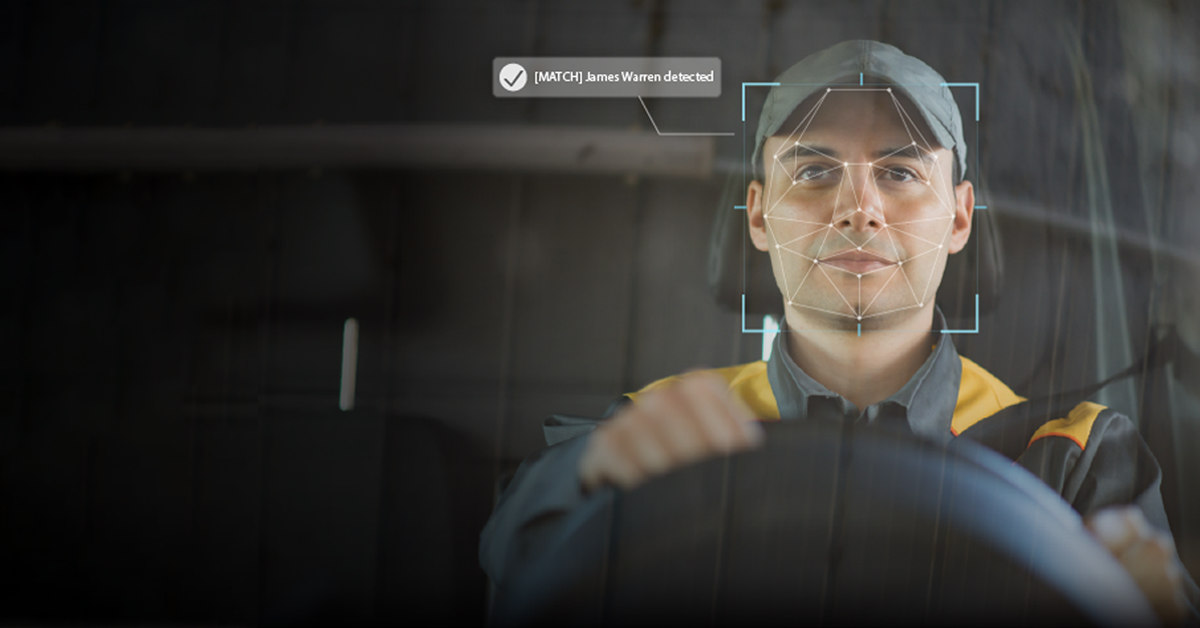What it is
Identifying drivers can be particularly important when employees share vehicles. Still, even when they’re not, it can be helpful to use an ID system to log hours and keep tabs on employee performance.
Many legacy systems leverage a fob or card system assigned to each employee to ID drivers. It was beneficial when this technology emerged as employers were previously operating blind. Since these initial systems, other technology has provided improved means to identify and track employees’ performance.
Ravens driver identification system drops fobs and key cards instead, opting to utilize Facial Recognition through the cabin-facing camera. The use of the AI cabin camera ensures a seamless means of driver identification without potential human errors, like losing their card or accidentally swapping identical fobs with another employee. This system requires no action by the employee and only initial effort by the manager to train the system. Following the setup and training of this system, it can run autonomously, tying drivers directly to the Raven reporting infrastructure.
Benefits of Implementing a driver identification system
While identifying drivers may only come across as a nice to have solution given that it adds cost to your operation, we assure you that time and time again, our clients have praised its ability to pay for itself. We’ve listed some of our clients’ most significant benefits from using our system below.
Prevent unauthorized use
Driver ID systems log when vehicles are in use and by who. If logs indicate that a vehicle was used out of business hours or by an employee who shouldn’t have been driving at a given time, you can take appropriate data-backed action. Raven’s system is also equipped to identify passengers alerting you if unauthorized companions are along for the ride with an employee.
Improve driving abilities

Keeping your employees safe is also good for your bottom line. You can create coachable moments by tracking driving performance, avoiding potential injury and costly insurance claims. In many cases, just having a tracking system encourages better driving behavior, as indicated by our client insert name. Raven’s system keeps a summarized history of drivers’ events to identify trends where some require additional coaching.
Automate your payroll

Relying on employees to fill and turn in logbooks can be inconsistent and inaccurate. Automate the process with driver identification. Ravens Trip Reports wrap up data associated with start and end times for each driver daily. This data can be exported and shared with anyone to be used in your payroll system.
Maintain A High Company Reputation
As a business with marked or branded vehicles out on the road, they serve beyond their practical purpose as an advertising expense. If the employee driving that vehicle decides to take liberties with their driving, this behavior directly reflects on the quality of your business. Implementing a driving ID system can enable you to take action knowing who was driving if a complaint is issued. Raven’s ID system takes preemptive measures alerting you to poor driving occurrences as they happen along with the associated video of the event. While an event once in a while is bound to happen, Raven’s reports also allow you to track all drivers’ performance over time, helping you discern when there is a trend of poor performance.
How it works
Raven’s cabin-facing camera is AI-powered, enabling the ability to perform Facial Recognition. This functionality identifies the vehicle’s driver and if there are any passengers. The AI component requires you train the system upfront by naming each of your drivers, removing images of incorrectly tagged drivers, and adding unidentified drivers to a profile. Over time the system becomes more and more capable of correctly identifying drivers, keeping your involvement limited to reviewing important events. Raven’s all-in-one ability bundles driver identification and its other features, including cameras, event detection, and reporting to deliver a complete solution for your business.




Comments are closed